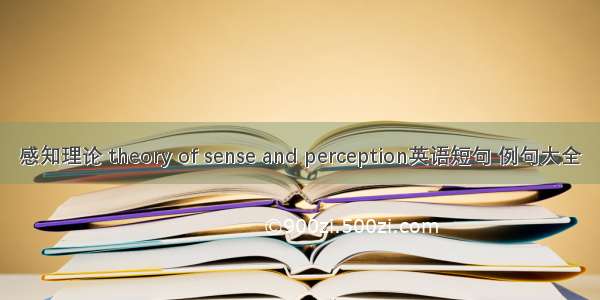
脏腑理论,the theory of Zang and Fu
1)the theory of Zang and Fu脏腑理论
1.Objective: To research the rule of the diurnal intraocular pressure (IOP) variation between patients and healthy controls, so as to determine the mechanism of diurnal intraocular pressure (IOP) variation withthe theory of Zang and Fu .目的:研究正常人群及非正常人群的昼夜眼压变化规律,主要从中医脏腑理论角度探讨眼压波动机制,以指导临床抗青光眼药物的中医辨证治疗和使用时间。
2)The study on theory of internal organs脏腑理论研究
3)zangfu theory脏腑论
1.There exist four kinds of TCM thinking on insomnia: yingwei yinyang theory,zangfu theory,pathogenic qi theory,and the theory of other pathogenic factors.中医对失眠的认识有四种理论,即营卫阴阳论、脏腑论、邪气立论和其他因素引起。
4)Discuss and research from the entrails脏腑论治
5)regulate zang fu-organs调理脏腑
英文短句/例句
1.Besides, regulating zang-fu" s functions and qi-blood relationship are also two important therapeutic principles. Space lacks for a detailed description of it.除此之外,调理脏腑功能和气血关系也是两种重要的治疗原则。篇幅所限,恕不叙述。
2.Syndrome Differentiation and Treatment of Insomnia from Yin-Yang Waxing and Waning以阴阳消长脏腑虚实理论辨治失眠症
3.The Theory of the Lung Function and the Relationship between Lung and Zang-fu中医肺脏功能的理论及其与脏腑的相关性研究
4.The Function Model of Digital Zang and Fu Organ Based on Chinese medicine organ picture theory基于中医藏象理论构建“数字脏腑”功能模型
5.Investigation of Correspondence of Intraocular Contents to Zang and Fu with the Theory of Zang and Orifice;以“藏窍理论”探讨目内组织的脏腑归属问题
6.The Research of Viscus Syndrome and Viscus Discrimination of the Two Han Dynasty;两汉时期脏腑证候与脏腑辨证方法的研究
7.The ascending, descending, exiting and entering of qi are mainly embodied in the physiological activities of the zang-fu organs, meridians and other processes of metabolism.气的升、、、具体表现在脏腑组织、络和其它代谢过程的生理活动中。
8.Pathological changes of the zang-fu organs may not only lead to qi-blood disturbance, but also affect qi and blood of the whole body.脏腑的病理改变不仅会导致气血紊乱,也会影响全身的气血。
9.Afterwards, the unbalance of Ying qi and Wei qi leads to the dysfunction of viscera, Qi, blood and fluid.六经病的实质是六经的“开、、”功能失常,导致营卫失调,并造成的脏腑气血津液功能紊乱。
10.Studying on the Regulating Effect and Mechanism of Electroacupuncture at Zusanli in Rats with FGID Based on the Theory of Acupoint and Visceral Coupling基于穴位脏腑相关性的足三里穴对胃肠功能紊乱大鼠的调节作用及机制研究
11.The theoretical system takes the physiology and pathology of zang-fu organs and meridians as its basis, and TDS as its diagnostic and therapeutic features.这套理论系统以脏腑经络的生理病理为基础,以辨证论治为其诊断特色。
12.The common physiological functions of the five Zang-organs are to produce and store essence; the common physiological functions of the six fu-organs are to receive, transport water and food.五脏的共同生理特点是化生和贮藏精气;六腑的共同生理特点是受盛和传化水谷.
13.The triple energizer with the related zang-fu organs, each having its own function to perform, accomplish jointly a complicated physiological process in the digestion, absorption, distribution and excretion.三焦与相关脏腑,各自执行其功能共同完成消化、收、散、泄这个复杂的生理过程。
14.Qi in the human body travels throughout the body and reach all the zang-fu organs and meridians to promote and activate the physiological activities of the human body.气运行于全身到达所有的脏腑组织和经络,促进和推动人体的生理活动。
15.The temperature of the human body and the ability of the zang-fu organs and tissues to perform their physiological activities are dependent on the warming function of qi.(3)人的体温,各脏腑、官等一切组织进行生理活动的能量,都属于气的温煦作用。
16.Winston"s entrails seemed to have turned into ice.温斯顿的五脏六腑似乎都变成了冰块。
17."and the skin of the ox and all its flesh, with its head and its legs and its inside parts and its waste,"公牛的皮和所有的肉,并头,腿,脏,腑,粪,
18.Nei jing said "All five-zang organs and six-fu organs lead to cough, not only lung".《内经》提出“五脏六腑皆令人咳,非独肺也”。
相关短句/例句
The study on theory of internal organs脏腑理论研究
3)zangfu theory脏腑论
1.There exist four kinds of TCM thinking on insomnia: yingwei yinyang theory,zangfu theory,pathogenic qi theory,and the theory of other pathogenic factors.中医对失眠的认识有四种理论,即营卫阴阳论、脏腑论、邪气立论和其他因素引起。
4)Discuss and research from the entrails脏腑论治
5)regulate zang fu-organs调理脏腑
6)Treatment according to the theory of visceral basis of affections多脏腑论治
延伸阅读
X理论-Y理论X理论-Y理论【X理论一Y理论]美国行为科学家道格拉斯·麦格雷戈.(伪uglaSM。Gre即r,l以拓一1964)提出的管理理论,概括地论述了人的本性和人类行为规律及其相应管理策略。在1948一1954年间,他对当时流行的管理观点和对人的特性的看法提出了疑问,并在1957年11月号的美国《管理评论》杂志上发表了《企业的人性方面》(Hunlan sideofEnte州se)一文,提出了有名的X理论—Y理论。在以后的著作中他做了进一步发展,19印年正式出版《企业的人性方面》一书。麦格雷戈把传统的管理观点称为X理论。他在《企业的人性方面》一书中指出:“企业管理当局利用人力来实现组织要求这项任务的传统观点可以大致表述为以下三点。为了避免混乱,我们引进一个标志,把这几点叫做‘X理论’:(l)企业管理当局为了达到经济目的,有责任把生产性企业的要素—金钱、材料、设备、人员—组织起来。(2)就人员来讲,这是一个指挥他们的工作、激励他们、控制他们的行动,修正他们的行为以适应组织需要的过程。(3)如果管理当局不作这种积极的干预,人们对组织的需要可能采取消极的—甚至对抗的态度。因此,必须对他们说服、报酬、惩罚、控制—必须指挥他们的活动。这是管理当局的任务。我们常常把它概括为:管理就是通过别人来把事情办成。在这种传统理论的背后还有一些附加的信念—不是那样明显,但却流传甚广。(4)一般人的本性是懒惰的—他尽可能地少工作。(5)他缺乏进取心,不愿承担责任,情愿受人领导。(6)他天生以自我为中心,对组织需要不关心。(7)他本性反对变革。(8)他轻信,不大聪明,易于受骗子和政客的煽动。”麦格雷戈基于对古典管理理论的研究,提出了与X理论截然不同的“人员管理工作的新理论”—Y理论。其要点如下:(l)工作中无论在体力和脑力方面的支出,都像在游戏或休息时一样地自然。人们并非天生厌恶工作。(z)外来的控制和惩罚性的威胁都不是使人作出努力来达到组织目标的唯一手段。人们在实现他们所承诺的目标任务时会进行自我管理和自我控制。(3)对目标、任务的承诺取决于实现这些目标、任务后所能得到的报偿的大小。(4)在适当的条件下,一般的人不但懂得接受,而且懂得寻求负有职责的工作。(5)以高度的想象力、智力和创造力来解决组织上各项问题的能力,乃是大多数人都拥有的能力,而非少数人所独具的能力。(6)在现代工业化社会里,一般人的智力还没有得到充分发挥。(7)企业管理当局应当负责把生产企业的各项要素组织起来,以实现企业的经济目标。(8)企业管理的基本任务是,安排好组织工作方面的条件和作业的方法,使个人需要和组织目标尽可能地结合在一起,以便把个人的智慧和能力充分发挥出来。
















